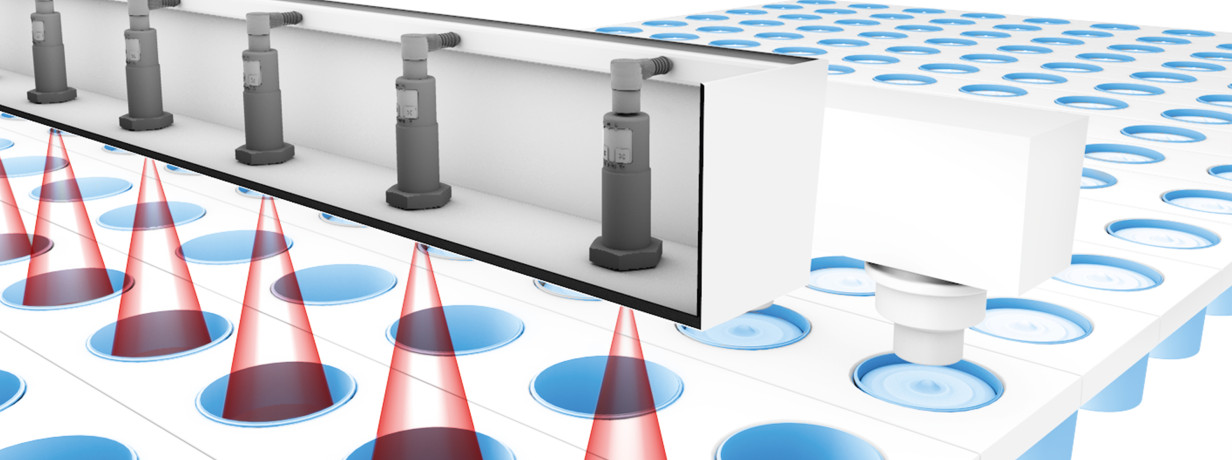Using ultrasonic sensors in microwell environments
Discover the functionality, applications, and implementation considerations of ultrasonic sensors

Reading Time: minutes
Ultrasonic sensors offer unique capabilities for lab environments. They rely on ultrasonic waves to detect part presence with precision. In this blog, I explore the workings of ultrasonic sensors, their applications, and considerations for optimal implementation, shedding light on their pivotal role in automating lab processes.
Understanding the functionality
Let’s first touch on how ultrasonic sensors function in different working environments. Ultrasonics refers to vibrations of frequencies greater than the upper limit of the audible range for humans, that is, greater than about 20 kilohertz. Ultrasonic waves of extremely high amplitudes are known as sonic. The sensors consist of both a transmitter and receiver, detecting part presence by measuring these sonic waves. The normal sensing range of an ultrasonic sensor varies depending on the specific model and application, typically spanning from a few centimeters to several meters. When working in a lab environment that relies heavily on accuracy and efficiency, ultrasonic sensing technology might be a valuable option for your operation.
Ultrasonic applications to enhance lab processes
So, how are ultrasonic sensors used in lab environments, and what applications are they used for? Most commonly, laboratories use them in a microwell environment. They can measure various processes, such as mixing, homogenization, dispersion, emulsification, extraction, degassing, and sonochemical reactions. The specific application dictates the preference for ultrasonic sensors. However, high-frequency ultrasonic sensors generally precede smaller objects and fine detail resolution, typical requirements in microwell environments.
Let’s focus more in-depth on mixing, homogenization, and cell lysis applications. Ultrasonic waves, with their high-frequency vibrations, can disrupt cell membranes, releasing intracellular materials, a process that can be useful in biological and medical research. Additionally, in microwell plate reading, ultrasonic waves can ensure a uniform distribution of particles or cells within the wells. Ultrasonic sensors equipped with an attachment like a cone or a similar apparatus focus the waves, which can improve accuracy in these environments. If you are having trouble measuring or automating any of these applications, an ultrasonic sensor can be a viable solution.
Considerations before using ultrasonic sensors in labs
Before deciding on an ultrasonic sensor, it is important to have a comprehensive assessment of variables in your application, like the frequency and intensity of the ultrasonic waves, the design of the microwell plate, and the nature of the material or cells within the microwells. This will ensure a successful integration and operation of the ultrasonic sensors with your application.
Despite these considerations, ultrasonics play a key role in automating lab cell environments, especially when capacitive or photoelectric sensors are not viable options.
For further insights tailored to your specific application, try reaching a trusted consultant or manufacturer.
Keywords
- Sensor technology
Author

Jack Crider
3 Contributions
Comment
Popular posts
Industrial sensing fundamentals – NPN vs PNP
What is a capacitive sensor?
How do I wire my 3-wire sensors?
The basic operating principle of an inductive proximity sensor
Contact form
Do you have any questions or suggestions? We are at your disposal.
Balluff Inc.
-
8125 Holton Dr.
Florence, KY 41042
